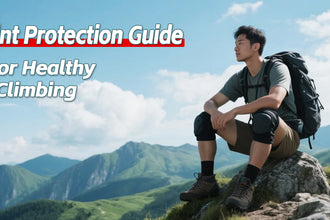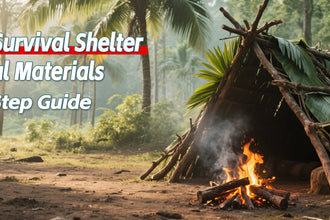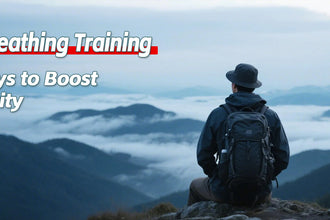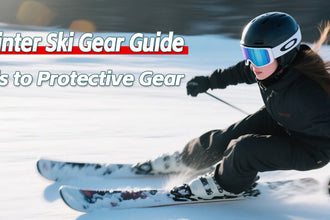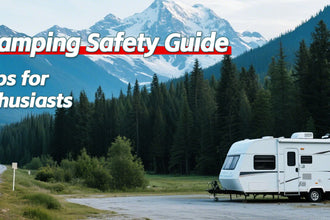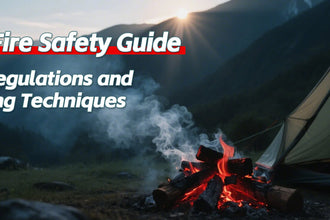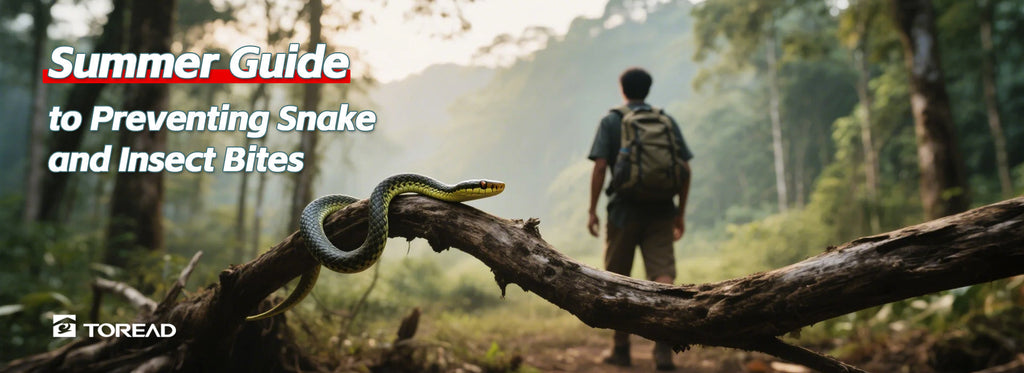

Summer brings warm weather and vibrant outdoor adventures, but it also increases encounters with snakes, insects, and other wildlife. Whether hiking, camping, or exploring nature, understanding how to prevent and respond to bites is essential. Below is a comprehensive guide to staying safe, paired with practical gear recommendations from TOREAD Outdoor.
1. Understanding Snake and Insect Behavior
Snakes and insects thrive in warm, humid environments. Snakes are most active when temperatures exceed 18°C (64°F), particularly during early mornings, evenings, or after rain714. Insects like mosquitoes, ticks, and fire ants are also more prevalent in summer. Key risk zones include dense grass, rocky crevices, and near water sources.
Pro Tip: Avoid high-risk areas marked as "snake hotspots," such as mountainous regions or dense vegetation, especially during peak activity times.
2. Prevention Strategies
A. Clothing and Gear
-
Cover Exposed Skin: Wear long sleeves, pants, and high-top boots to minimize skin exposure. Tuck pants into socks to prevent insects from crawling in31016.
-
Choose Colors Wisely: Opt for light-colored clothing, which is less attractive to mosquitoes and makes it easier to spot ticks.
B. Campsite and Trail Safety
-
Avoid High-Risk Zones: Steer clear of tall grass, leaf piles, and rocky crevices where snakes and insects hide. Stick to well-trodden paths.
-
“Stomp and Tap” Technique: Use a walking stick to tap the ground ahead, startling snakes and causing them to retreat.
C. Repellents and Environmental Control
-
Apply Insect Repellent: Use EPA-approved repellents containing DEET or picaridin for mosquitoes and ticks. Reapply as directed.
-
Snake Deterrents: Sprinkle sulfur, mothballs, or commercial snake repellents around campsites. Snakes dislike strong chemical smells.
3. Emergency Response to Bites
Snake Bites
-
Stay Calm: Panic accelerates venom spread. Note the snake’s appearance for identification.
-
Immobilize the Limb: Keep the bitten area below heart level. Use a compression bandage (not a tourniquet) 5–10 cm above the bite to slow venom flow417.
-
Seek Immediate Help: Avoid cutting the wound or sucking out venom. Transport the victim to a hospital with antivenom.
Insect Bites/Stings
-
Ticks: Remove with fine-tipped tweezers by gripping the head close to the skin. Avoid twisting or crushing the body.
-
Bees/Wasps: Scrape the stinger out sideways with a card. Apply ice to reduce swelling.
-
Fire Ants: Wash the area with soap and water. Use antihistamines for severe itching.
4. Outdoor Gear Solutions
Enhance your safety with these specialized products:
-
TOREAD Snakebite First-Aid Kit: Includes compression bandages, antiseptic wipes, and a suction device for venom extraction (note: medical follow-up is still critical).
-
Permethrin-Treated Clothing: Long-sleeve shirts and pants pre-treated to repel ticks and mosquitoes for up to 70 washes.
-
Anti-Snake Gaiters: Heavy-duty, bite-proof leg protectors for high-risk terrains.
-
Portable Snake Hook: Lightweight tool for safely relocating snakes without direct contact.
-
Ultrasonic Insect Repeller: Eco-friendly device emitting frequencies to deter mosquitoes and ticks within a 10-meter radius.
Conclusion
Summer adventures demand vigilance against nature’s smaller inhabitants. By adopting proactive measures, carrying the right gear, and knowing how to respond to emergencies, you can enjoy the outdoors safely. Remember: Preparation is the key to turning risks into rewards.






